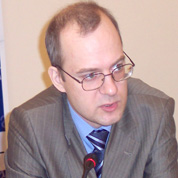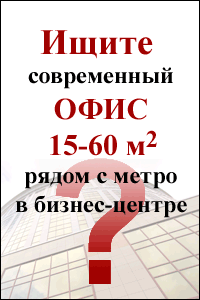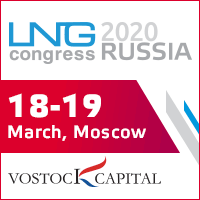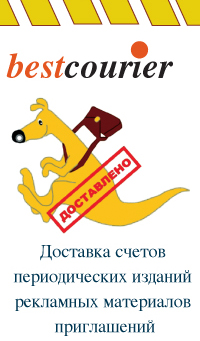A review of the economic situation in Russia in 2010 and forecasts for 2011

These events take place regularly from year to year. However, the year 2010, in my opinion, is special, as it has demonstrated certain specific factors that can significantly alter the usual scheme of developing corrective measures and revaluation of preliminary plans. By autumn of 2010, there was a rather strained situation in Russia’s economy. The strain resulted mostly from the heavy losses sustained in the summer drought and fires, which further exacerbated the economic problems caused by the recent global financial crisis. This brings to mind what experts call “a stress test.” This term is used to denote the studying of viability of a functioning system under artificially created or simulated extreme conditions. For instance, a stress test is used by banks to explore their adaptability to expected crisis situations with pre-determined conditions.
A real ‘natural stress test’ for the Russian economy
In August 2010, the whole of the Russian economy was subjected to a stress test. However, this test was not conducted under a simulated condition, but in a real situation, and thus led to huge losses. The damage incurred by the economy during the little over a month of heat wave and wild forest fires triggered by it, according to preliminary estimations, totaled about 1% of Russia’s GDP value in 2010, a figure, which, in monetary terms, amounted to about $15bln. Similarly, the downward review of the official prognosis of grains harvest for 2010 totaled 60mln-65mln tons. By the end of the year, the Russian economy is expected to lose about $3bln of export revenues from the government’s temporary ban on grain exports and experience a hike in food prices inflation, fueled, amongst others, by the escalating costs of imported food, whose share in the total volume of Russians’ grocery consumption is also on the increase.
“The damage incurred by the Russian economy during the record summer heat and the accompanying forest fires has been estimated at 1% of GDP or about $15bln in monetary terms."
On August 16, the Federal State Statistics Service (Rosstat) published its preliminary assessment report on Russia’s industrial output for 2010. According to the report, the volume of industrial out, taking into account the traditional seasonal fluctuations, declined by 0.1% in July, following a drop 0.5% in June. Economists have named the unprecedented heat waves and increasing competition with imported goods among the major causes of the decline. Analysts are not expecting full restoration of the industrial output before the end of the year, and this means the beginning of stagnancy in the industrial sector. In summer, to be precise, in July, the capital investments growth rate decelerated dramatically by 9.3 times, compared to June. According to the Rosstat’s data, capital investments growth dropped to 0.8% in July from 7.4% in June and 5.5% in May.
Kremlin’s war against corruption yet to produce positive results
Besides, the war against corruption initiated by the Kremlin has yet to yield the expected positive effects. This evident in the data provided by the Anticorruption Public Office of the “Clean Hands” operation, which has revealed that the volume of corruption turnover has reached 50% of Russia’s GDP, a figure that fully correlates with the World Bank’s similar data of 48% of GDP. The most corruption-prone spheres are the government and municipal services, where bribes and other forms of illicit practices account for up to 90% of these sectors’ annually generated revenues. The second place is held by the education sphere, where 80% of revenues are in the ‘shadow.’
Russian entrepreneurs have said they annually lose up to 50% of their profits to corruption, a negative reality that kills the incentive for effective business operations in the country, as it is impossible to perform high-quality works for 1/2 or 1/5 of the contract prices. Indeed, it is not only private businesses that are inefficient in 
Apart from the factors mentioned above, the country’s economy has been negatively influenced by the lack of adequate power generation in Siberia, mostly due to the ongoing reconstruction activities at the Sayano-Shushenskaya Dam, which was seriously damaged in an accident in 2009. The aggregate sum of these negative trends in the economy has once again highlighted the acute necessity for developing a program for the privatization of state enterprises within the shortest possible time. As a result, several dozens of large-scale enterprises, including the controlling stake in the VTB Bank, about 25% of stakes in Russian Railways Corp., Aeroflot, etc., are expected to go private over the coming years. The funds accumulated from these privatization programs are to be used to cover the budget deficit and fulfillment of state’s social obligations.
It needs to be noted here that the data and arguments listed above are based on the best case scenario of a stable external political and economic environment. In other words, it has been assumed that the global financial system will not undergo any major changes and no damaging major military conflicts will arise. Such assumption is, to say the least, highly disputable. This is because, according to several foreign analytical centers, a collapse of the global financial system currently based mainly on the U.S. dollar is one of the major threats to global stability in the medium-term perspective.
Prevailing situation poses challenges for modernization
 These problems will undoubtedly have a substantial effect on the Russian government’s plans for modernizing the country’s economy. In this respect, there is a need to note the following points: Firstly, major fundamental changes in social, economic and political systems cannot occur within just a few months. Indeed, even several years might not be enough. Therefore, the Kremlin’s modernization policy is unlikely to yield palpable effects in the short-term perspective. Secondly, if modernization is to be really implemented, and not just for an appearance sake, then the policy will lead not to a reduction in state budget deficit, but to an increase, as huge resources will be needed to bankroll the modernization expenditures for upgrading and restructuring the current economic system and its parameters.
These problems will undoubtedly have a substantial effect on the Russian government’s plans for modernizing the country’s economy. In this respect, there is a need to note the following points: Firstly, major fundamental changes in social, economic and political systems cannot occur within just a few months. Indeed, even several years might not be enough. Therefore, the Kremlin’s modernization policy is unlikely to yield palpable effects in the short-term perspective. Secondly, if modernization is to be really implemented, and not just for an appearance sake, then the policy will lead not to a reduction in state budget deficit, but to an increase, as huge resources will be needed to bankroll the modernization expenditures for upgrading and restructuring the current economic system and its parameters.
But this is the things have always been, starting from the policies of industrialization, collectivization, perestroika, etc., and most likely way it will be this time too. A good analogy will be from a patient medical case: a patient needs a major surgery to regain his health. But immediately after the surgery he will need a certain rehabilitation period, when his health could be much worse than during the pre-surgery period, and thereafter become better.
The third point is that modernization is best executed not during a crisis, when the economy and its financial system are experiencing major problems and national budget falling apart at its seams, but during a relatively tranquil period, when there are free financial resources and harmony in the society as well as general understanding among the public of the modernization policy’s goals and objectives.
* The author is the general director of the Moscow-based Center for Strategic Estimations and Forecasts.












 Web design,
Web design,